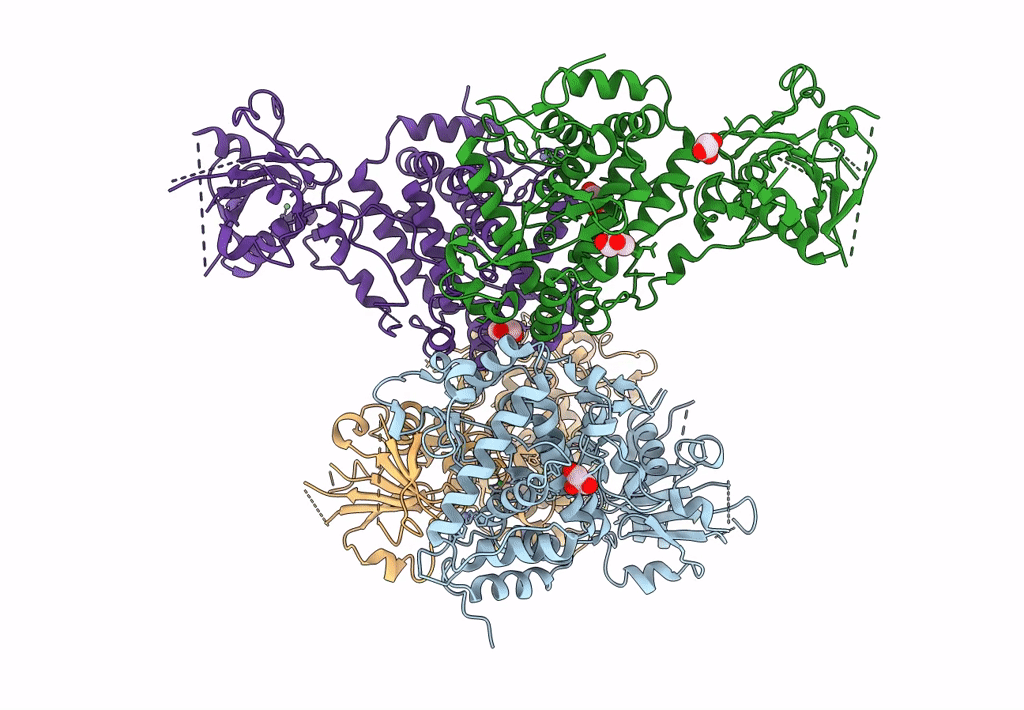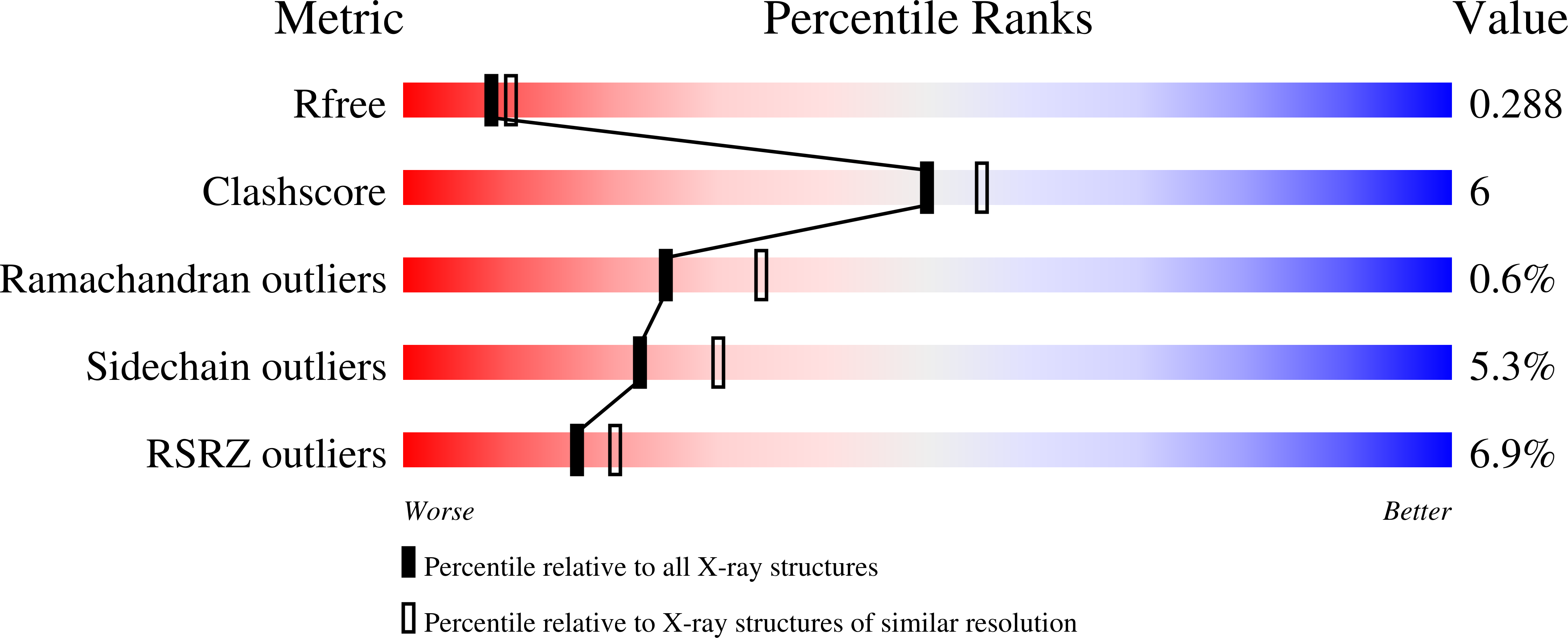
Deposition Date
2022-04-27
Release Date
2023-05-10
Last Version Date
2024-11-13
Entry Detail
PDB ID:
7ZPF
Keywords:
Title:
Three-dimensional structure of AIP56, a short-trip single chain AB toxin from Photobacterium damselae subsp. piscicida.
Biological Source:
Source Organism:
Photobacterium damselae subsp. piscicida (Taxon ID: 38294)
Host Organism:
Method Details:
Experimental Method:
Resolution:
2.54 Å
R-Value Free:
0.28
R-Value Work:
0.23
R-Value Observed:
0.24
Space Group:
P 1 21 1


